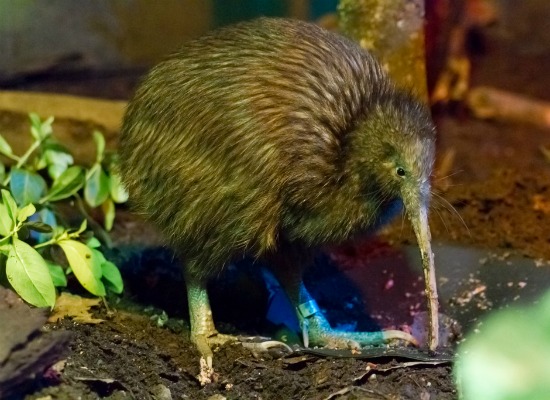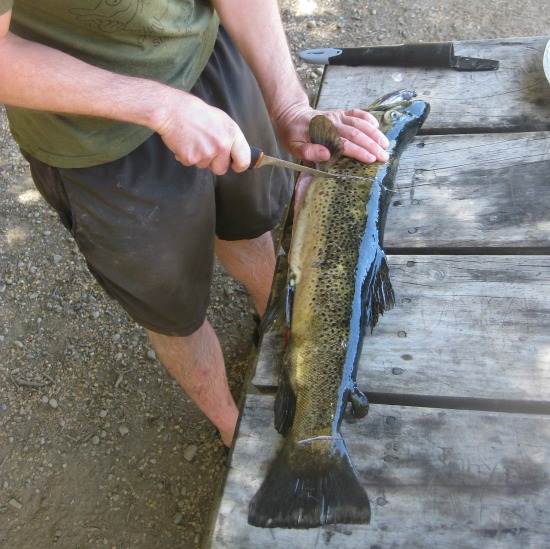Waging War on Mammals in New Zealand
The family spent days in a cabin eating food, provided by the New Zealand Department of Conservation, which requested to stomp on kiwi-killing vermin
/https://tf-cmsv2-smithsonianmag-media.s3.amazonaws.com/filer/20120110021052PossumsSMALL.jpg)
New Zealand is a nation large enough to host hundreds of millions of invasive pests but just small enough that the federal government sees an honest chance at winning the war against them–and so the battle is on.
I met a young couple this morning in the campground kitchen–Jo and Jason, of Invercargill–who told me all about it. We began talking about trout and diving, but it soon became apparent that they hunted and ate more than just fish and abalone; pigs and deer were also favored quarry. What’s more, Jo told us, she, Jason and their relatives are guns-for-hire, quite literally, and spend two-week family holidays shooting feral tabbies, rabbits, brushtail possums and other non-native mammals in trade for room and board on Stewart Island–a cat-and-rat infested island national park off the southernmost tip of New Zealand. On one recent vacation to this wilderness, they spent 11 days in a government cabin eating food bought with government vouchers, all provided by the New Zealand Department of Conservation, which only asked for an honest-to-goodness effort to stomp on vermin in return–which the family did. (A request for an interview with a D.O.C. pest control officer about this volunteering opportunity went unanswered; he was reportedly swamped with duties.)
“We shot nine kets ‘n’ twinny-somethin’ possums,” Jo said cheerily. “We also tre’apped a lot of retts.” Jason’s preferred game was pigs, he said, and he pulled up his pant leg to show us a vicious scar below the ankle. “Got misself bit by a pig hee’ya,” he said happily as he launched into a detailed and bloody account of the 180-pound boar that fought its way through a pack of pit bulls, broke one’s jaw plumb in half and slashed Jason’s ankle before the young hunter tackled the kiwi-killing swine and forever silenced it with a knife to the heart.
“It’s good fun,” he chirped.
Stewart Island is just one site of earnest pest-culling schemes in New Zealand. Throughout the nation, multiple deer species severely overgraze low-lying brush, plant species that never knew, until the 1800s, the unpleasant reality of being stalked by ravenous, cud-chewing ruminants. The animals were introduced as quarry for gun-slinging outdoorsmen–but populations ballooned out of control. By the mid-1900s, the government was actively trying to cull or eliminate the herds. Using helicopters to access remote areas became popular in the 1960s, with hunters sometimes shooting from the chopper, and the practice remained common for decades. Many culled deer are sold commercially as venison, and helicopters are still used to hoist bundles of carcasses from remote areas back to civilization. Only occasionally do hunters still shoot from the aircraft. (According to Jo, whose father works with the Department of Conservation, showers of blood and gore have sometimes drained from the helicopters and splattered cars and properties, sparking groans of bemused c’est-la-vie-in-New-Zealand annoyance in the rural communities below.)
Possums, of which New Zealand is the host to 70 million, pose a tremendous problem. They were introduced in the 1800s by entrepreneurs hoping to start a healthy fur industry, but today the nation–and its fragile plant community on which the fluffy buggers graze–is overrun. Possum traps lie everywhere in the bushes, road-killed carcasses litter the roadsides and at least one elementary school has held a gala in which the children shot possums and competed afterward in a possum-throwing contest.

Many of New Zealand's pest control projects are efforts to save the national bird, the kiwi. Photo courtesy of Flickr user The.Rohit.
Meanwhile, 30 million rabbits and countless millions more of rats, hedgehogs, feral goats, seven deer species, weasels, stoats and many other pests swarm New Zealand and live more or less happily together, even though some were released as means of eliminating others. Consider the stoat–a predator in the weasel family intentionally introduced to New Zealand in the 1880s to control rodents and rabbits. The stoats turned out to prefer kiwi (the feathered kind). The stoats are blamed today for the extinction of several New Zealand bird species and are often considered one of the worst mistakes made by colonists. Rabbits and rats remain as abundant as ever.
And there are Canada geese, of which 18,000 have been killed recently in organized culls.
The good news is that locals and tourists can get involved in culling many of New Zealand’s peskiest problem animals through a variety of NGO and government volunteer programs that takes ecotourism in a unique blood-and-bullets direction. I’m not criticizing; New Zealanders are in a tough jam and have got to do what they’ve got to do–but it’s fair to say that in few, if any, other nations are people so encouraged to kill.
Fish Report: We caught one two-pound brown trout at Lake Wanaka. Later, in the streams running into and out of South Mavora Lake, we found excellent fishing for rainbows – hard-fighting, fat and muscular 17-inchers – and caught two brown trout. Each was two feet long and perhaps six pounds. Many other browns just as large hunkered in the slow, clear waters, among silken ropes of algae, like submerged logs. New Zealand trout fishing is truly phenomenal. The trout all have pink flesh like salmon, and we’ll be doing our best to cull this invasive species.

Butchering begins on a 6-pound brown.
/https://tf-cmsv2-smithsonianmag-media.s3.amazonaws.com/accounts/headshot/Off-Road-alastair-bland-240.jpg)
/https://tf-cmsv2-smithsonianmag-media.s3.amazonaws.com/accounts/headshot/Off-Road-alastair-bland-240.jpg)